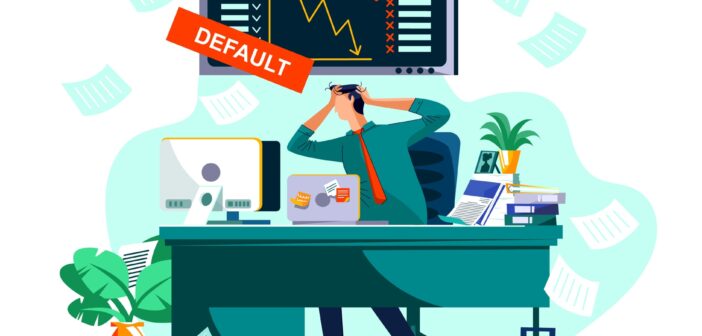 Track2Realty Survey
Track2Realty Survey
A record low household savings, double digit unemployment, and rising inflation, has added to the harsh reality of Indian home buyers’ high Debt to Income (DTI) ratio. The Covid induced financial hardships have indeed wreaked havoc with many of the Indian home buyers. Despite of the advantages of lower interest rates, their DTI ratio has suddenly shot up beyond what could be termed as manageable level.
While the new home buyers post Covid-19 are playing safe and are careful to keep the LTV (Loan to Value) on the lower side, stress is definitely building up among the existing home buyers. Their DTI ratio that was well in balance when they bought the dream home has suddenly gone for a toss with job losses and/or salary cuts.
An online poll by Track2Realty finds some disturbing realities of the home buyers having already bought the home. Nearly one-third, as many as 32%, report salary cut post the pandemic. 68% maintain the additional savings due to lockdown is not enough to compensate with the salary cut.
Take the example of Naman Gupta, a communication professional. When he bought the house in the year 2017, his salary was INR 1 lakh, and the DTI was well in balance of 40%. Now that his salary has been cut by 30%, his DTI has shot up to more than 50%, despite a lower interest rate. It is hence affecting his day-to-day family expenses.
“We all look up to growth and not de-growth in jobs. When I had committed for an EMI of INR 40,000, I was expecting a salary hike of 20%. It would have practically kept my DTI in the comfortable range of around 30%. But now I am in a fix and with not much saving in hand it would not be easy to keep serving the EMIs to retain the house for long,” says Naman.
Naman is not alone in having faced this disturbing reality of the suddenly high DTI being forced. No less than 28% Indian home buyers in the survey reported that they are witness to DTI scaling up 50% or more. What looks even scarier, from the standpoint of existing home buyers’ sustenance, is the fact that after the second wave of Covid, 46% Indians are apprehensive of salary cuts or job losses in future.
“I was already living a paycheque to paycheque life after having bought an apartment in a city like Bengaluru. Yes, I do admit that I got over leveraged in the home purchase but then I didn’t have the liberty of choice. In cities like Bengaluru, you either pay a hefty price to buy a house or keep paying a higher rent,” admits S Ramaswamy, a software professional.
The survey noted that 64% Indian home buyers admit to have over leveraged their financial means and live with higher DTI ratio. What looks even more scary is the fact that 22% of respondents reported having borrowed more to sustain their livelihood and keep paying the housing EMI post the pandemic. A Reserve Bank of India (RBI) data released recently also admits that India’s households financial savings rate dropped to 10.4% of the GDP in the July-September 2020 quarter compared with 21% in the preceding quarter.
Another RBI data released last year points out that household income as indicated by the salary and wages bill of the country’s top listed companies has expanded at a compound annual growth rate (CAGR) of 4.3% against 17.7% CAGR growth in borrowing by households or individuals. Hence, it doesn’t come as a surprise that 72% of respondents even admit paycheque to paycheque life after having bought a home.
This also raises a fundamental question that whether this would lead to foreclosure and distress sale in the housing market. Unfortunately, there is no clear answer to it because 70% of the home buyers report the selling price in the secondary market today is much lower than their overall acquisition cost.
“Our major part of the household savings got exhausted while buying the house. We were actually not at all prepared to face this kind of financial crisis. Now we are managing with the little bit of savings left. No one is sure for how long this crisis will remain. My major worry is how to keep the housing EMI paying. A distress sale at this point of time would be a huge loss. We would never be able to buy a house again,” admits Prachi Desai in Mumbai.
Higher Debt to Income Realities
32% report salary cut
Lockdown saving not enough to compensate 68%
28% witness to DTI scaling up 50% or more
46% apprehensive of salary cut or job losses
64% admit over leveraging in buying a house
22% report to have borrowed more after Covid
72% admit living paycheque to paycheque
70% find selling price lower than the acquisition cost
What is the ideal Debt to Income Ratio?
Debt to Income is a quantifying applied economic tool that divides the gross monthly income with the debt. The lenders use this to determine if a potential home loan borrower is eligible and capable of repaying the debt. Empirical evidence with housing loans suggest that borrowers with a higher DTI of above 50% are more likely to default in servicing the EMI of the home loan.
In most of the matured economies of the world, the financial experts suggest the “28/36 Rule” where a comfortable level is that your household expenses should not exceed 28% of its gross monthly income and debt should not exceed more than 36%. A DTI of 36-43% indicates the borrower has less room to handle any unforeseen expenses.
While 50% or above DTI is a clear red flag in other parts of the world, in India it is a reality with a good number of home buyers. However, now with the job losses and salary cuts, this is becoming unbearable for the home buyers.
Any Solution?
Amitabh Sinha, an economic researcher points out that the buyer should not be living under the fantasy of improved earnings in the near future. According to him, one should be more rational than emotional with the house to avoid future loan default and foreclosure.
“There could be only two possible solutions – One is either you liquidate other savings & investments to pay upfront to the bank as much as possible and bring the EMI lower. If you don’t have any other savings, then you should discuss it upfront with the bank and, citing your changed financial situation, ask them to restructure the loan for a longer tenure to keep the EMI lower,” says Sinha.
Story Updated: 17 July, 2021
Higher home loan adding to stress
When the Debt to Income ratio goes up, the higher home loan EMIs lead to many compromises with household budget. It’s not just discretionary spending but the average salaried class home loan borrower on the edge is today finding it a tricky situation to deal with. Home loan defaults are generally avoided in India and there are only a few cases of foreclosures in this part of the world. The home owners prefer to liquidate the property than default on EMIs in case of financial distress.
Today, there are clear indicators to suggest the financial distress is building up among the Indians after salary cut and job losses. The home loan that comprise the major share of EMIs in India is hence under the scanner, after credit card defaults and gold loan distress sale. Facts speak for themselves:
- In May, the cheque bounce rate for loan payments doubled to 21% from a year ago, as per data from Creditas Solutions
- Credit cards default also rose to 18% from 10% during the said period
- Mannapuram Finance auctioned gold worth about $55 million in the January-March quarter compared with $1.1 million in the preceding three quarters combined
- CRIF India that runs the Credit Bureau CRIF High Mark says the overall home loan delinquencies have increased by 23 basis points (bps) to 2.49% till December 2020
Ravi Sinha
@ravitrack2media
Track2Realty is an independent media group managed by a consortium of journalists. Starting as the first e-newspaper in the Indian real estate sector in 2011, the group has today evolved as a think-tank on the sector with specialized research reports and rating & ranking. We are editorially independent and free from commercial bias and/or influenced by investors or shareholders. Our editorial team has no clash of interest in practicing high quality journalism that is free, frank & fearless.
Subscribe our YouTube Channel @ https://bit.ly/2tDugGl





